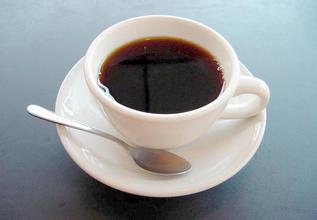Introduction to the flavor and taste of coffee from the plump Paradise Bird Manor in Papua New Guinea
Papua New Guinea is divided into 21 provinces and capital districts (Port Moresby). The names of the provinces are as follows: central (once translated as "Central"), Northern (once translated as "North"), Chimbu, East New Britain, East Sepik, East Highlands, Enga, Gulf, Madan, Manus, Min Bay, Moroby, New Ireland, North Solomon, South Highlands, West New Britain, West Sepik, West, West Heights, Hela Province, Jiwaka Province) Papua New Guinea
Independent State position of Papua New Guinea
Independent State position of Papua New Guinea
China (The Independent State of Papua New Guinea) is referred to as Papua New Guinea. There are two theories about the origin of a Papuan: one is that the Portuguese Menezes sailed from Malacca to the Maluku Islands in 1526, but the sea breeze blew the ship to an unknown place, and the land was called Papua. It comes from the Malay word tanahpepua, which means the land of curly-haired people. Another theory is that the early Portuguese came here and asked the local residents where it was. The answer is Papua, so they put the ethnic name of Papua and the local place name. The ethnic name comes from the Malay language papuvah (curly hair) or pua-pua (dark brown). Refers to the hair and skin color of the Papuans, the main inhabitants of the island. The island of New Guinea, also known as Irian. Also known as the crocodile capital (crocodile farming is highly developed) 98% of Papua New Guinea is Melanesian, and the ancestors of indigenous peoples arrived in the area less than 40,000 years ago. There are also residents of many other parts of the world, including China, Europe, Australia, the Philippines, Polynesia and Micronesia. In 1975, Papua became independent, with 40000 foreigners (mainly Australia and China) in Papua New Guinea.
The government's response is to establish a new level of quality, temporarily suspend the production of coffee such as Y, and no longer implement the policy of "one grade, one price". This allows buyers to price according to quality, which is bound to have an impact on the income of farmers who produce shoddy coffee beans. By 1993, the quality problem had been basically solved. Most regular customers are buying coffee from Papua New Guinea again. Coffee such as Y is now sold at slightly lower extra prices, indicating that its quality has improved and that the coffee industry plays an important role in the country's economy. More than 1 million people are directly and indirectly engaged in the industry. The government encourages planting by offering a minimum purchase price. The industry itself is controlled by the Coffee Industry Council (Coffee Industry Board). The commission is located in Goroka, in the eastern part of the island, while exports are handled by private companies.
The frost in 1975 destroyed most coffee crops in Brazil, but stimulated the development of coffee in Papua New Guinea. The Government has implemented a scheme to finance the creation of about 20 hectares of coffee plantations in rural or collective land ownership. This measure has indeed increased the penetration of coffee in the local economy, with annual production reaching 1 million bags by 1990.
Papua New Guinea is an island country in the western South Pacific and a member of the Commonwealth. The name of the country consists of Papua and New Guinea. There are many small islands here, about 600 in size. It is adjacent to Indonesia and Australia to the south. It belongs to the Asia-Pacific region, but it is a country in Oceania. Located in the tropical climate, high temperature and rainy. Rich and rich volcanic soil

Important Notice :
前街咖啡 FrontStreet Coffee has moved to new addredd:
FrontStreet Coffee Address: 315,Donghua East Road,GuangZhou
Tel:020 38364473
- Prev

Introduction to the flavor and taste characteristics of Nicaraguan lemon manor coffee with fragrant flavor
Nicaragua is located in the central part of Central America, bounded by Honduras in the north, Costa Rica in the south, the Caribbean Sea in the east and the Pacific Ocean in the west, with a total area of 130400 square kilometers. Topography: the central part of Nicaragua is a highland; the east is a coastal plain with many jungle swamps and low-lying terrain; the west is a coastal lowland with many volcanoes and lakes in the east. [4] the climate of Nicaragua Plain is high.
- Next

Introduction to the characteristics of Ethiopian Coffee Flavor Manor with suitable mellow intensity
In July 1991, EGF hosted a national conference with the participation of more than 20 political and ethnic organizations. The meeting adopted the Transitional Charter and elected an 87-member House of Representatives, with EGF Chairman Meles Zenawi as President of the Transitional Government and President of the House of Representatives. A transitional government was established. On May 24, 1993, Eritrea (formerly Eritrea Province of Ethiopia) adopted the International Community.
Related
- Does Rose Summer choose Blue, Green or Red? Detailed explanation of Rose Summer Coffee plots and Classification in Panamanian Jade Manor
- What is the difference between the origin, producing area, processing plant, cooperative and manor of coffee beans?
- How fine does the espresso powder fit? how to grind the espresso?
- Sca coffee roasting degree color card coffee roasting degree 8 roasting color values what do you mean?
- The practice of lattes: how to make lattes at home
- Introduction to Indonesian Fine Coffee beans-- Java Coffee producing area of Indonesian Arabica Coffee
- How much will the flavor of light and medium roasted rose summer be expressed? What baking level is rose summer suitable for?
- Introduction to the characteristics of washing, sun-drying or wet-planing coffee commonly used in Mantenin, Indonesia
- Price characteristics of Arabica Coffee Bean Starbucks introduction to Manning Coffee Bean Taste producing area Variety Manor
- What is the authentic Yega flavor? What are the flavor characteristics of the really excellent Yejasuffi coffee beans?

